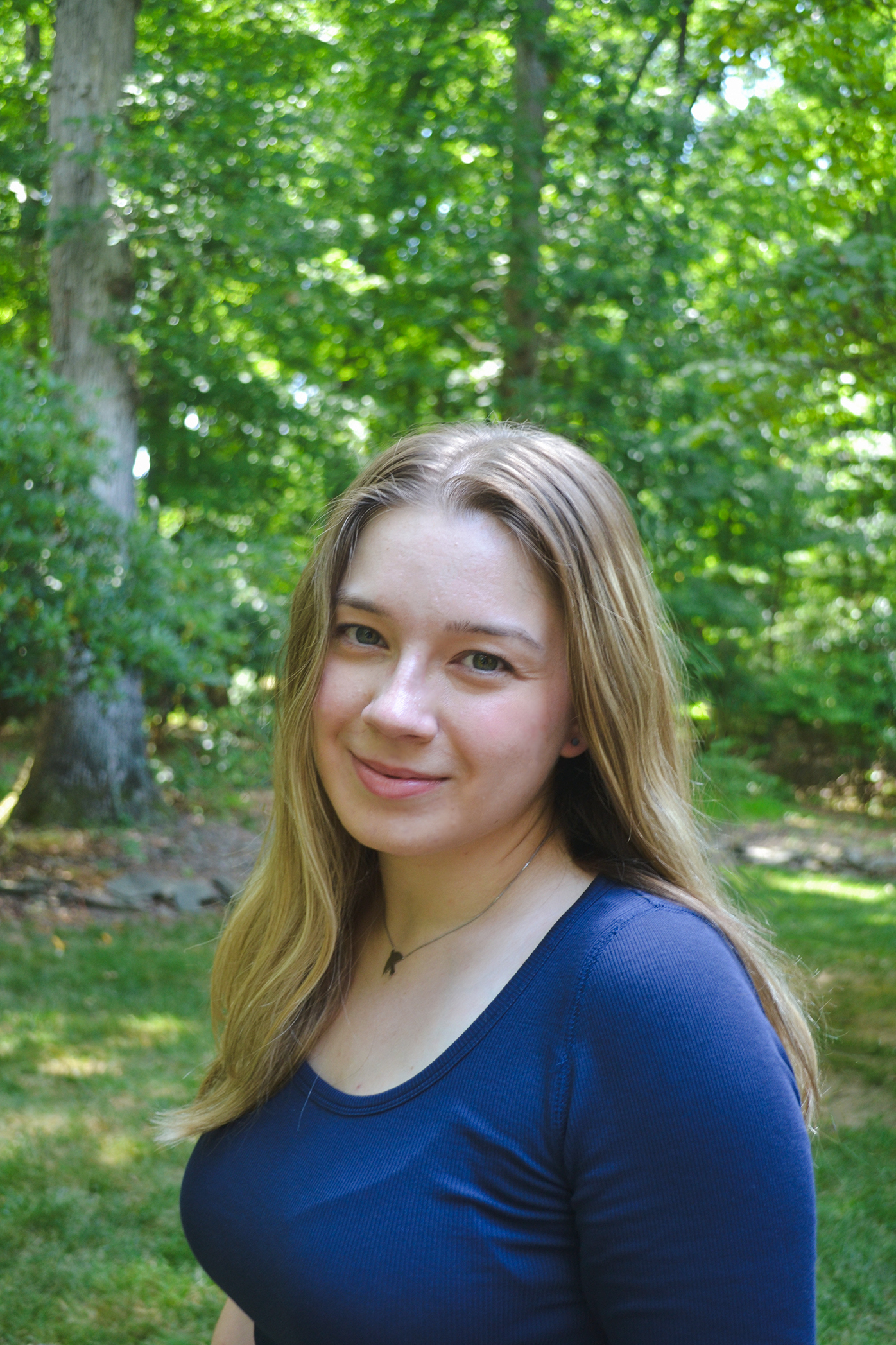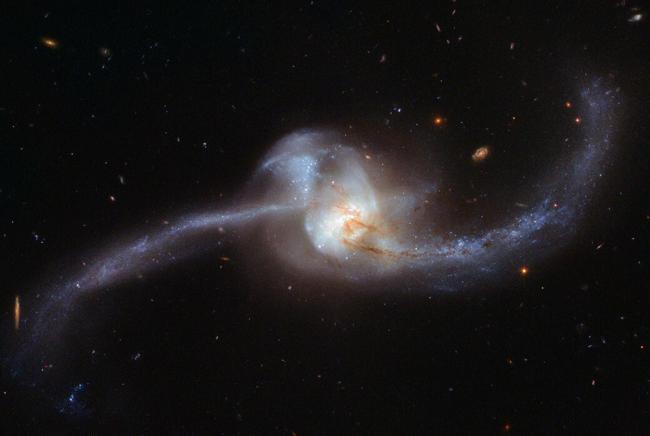Intro

Hi, I'm Adri! I graduated in May 2025 with my PhD in physics from Princeton, where I was also a National Science Foundation Graduate Research Fellow. I study theoretical physics, focusing on unraveling what the process of galaxy formation can reveal about the properties of dark matter. I use combinations of semi-analytic modeling, N-body simulations, cosmolological hydrodynamical simlations, and machine learning to study the properties and dyanmics of disrupting satellite galaxies, particularly as they relate to the underlying dark matter physics. You can read more about my work and my future work, which will focus on bridging the gap between theory and observations in preparation for the influx of data from the upcoming Rubin Observatory and Roman Space Telescope, here! A copy of my PhD dissertation can be found here.
I'm also passionate about communicating science so it is accessible to everyone; diversity, equity, and inclusion in physics; and teaching! I've served as a board member for Princeton Women in Physics since 2020, and I was a founding board member of the Princeton Physics Department's EDI Initiative. For AY 2024-25, I was a faculty member in the Princeton Writing Program, serving as a Quin Morton Teaching Fellow during my final year of graduate school. You can learn more about my different roles here. Thanks for stopping by, and please reach out if you have any questions or for collaboration! I can be reached through the Contact page or by emailing dropulic [at] princeton [dot] edu.
Work

Figure 1: Captured by NASA's Hubble Space Telescope, this image shows a merging galaxy, NGC 2623.
The ΛCDM cosmological paradigm has been remarkably successful in describing the large-scale structure of the universe. However, studies of low-mass, dark matter-dominated satellite galaxies undergoing tidal disruption, which leave behind "tidal debris" and comprise much of galactic "substructure," present some of the strongest challenges to this model. For example, ΛCDM simulations provide groundbreaking insight into galaxy formation but also predict a variety of too dense, too many, and too massive intact satellite galaxies compared to Milky Way data. These challenges call into question our understanding of galaxy formation and the prevailing theory that dark matter is cold and collisionless.
Populations of tidal debris, such as cold, coherent stream-like structures and more phase-mixed, shell-like structures of stars, hold the key to unlocking a deeper understanding of baryon physics, dark matter (DM) physics, and baryon-DM interactions. Many proposed solutions to ΛCDM's challenges hinge on galactic properties and processes that influence the not-yet-completely understood tidal disruption process. Indeed, simulations have shown that modifying baryon-DM interactions or the DM particle physics can profoundly change host halo properties and substructure. Studying tidal disruption is additionally important because tidal disruption rates can constrain DM and galaxy evolution models, as they are sensitive to the density profiles of satellites, which are shaped by the particle nature of DM, which itself is highly theorized.
The upcoming Rubin Observatory Legacy Survey of Space and Time (LSST) and Roman Space Telescope will revolutionize tidal disruption studies by providing data on billions of stars, many from disrupting satellite galaxies. To fully capitalize on this wealth of data and rigorously test ΛCDM at galactic scales, we must bridge the gap between data influx and galaxy modeling. Advanced machine learning techniques will be essential to manage the scale and complexity of the data and identify populations of faint tidal debris in the Milky Way and external galaxies. On the theoretical side, cosmological simulations are statistically limited, unable to fully account for uncertainties in host galaxy properties and halo variance, complicating the assessment of ΛCDM inconsistencies. Harnessing complementary semi-analytic tools is essential, as they efficiently generate diverse satellite population realizations, bridging critical statistical gaps that cosmological simulations alone cannot address.
During my PhD, I pioneered innovative techniques that integrate galaxy formation theory, machine learning, and Galactic data, advancing our understanding of the complex relationship between tidal debris and their host galaxies.
StreamGen: Population Statistics of Semi-analytic Disrupting Satellites
A crucial challenge in ΛCDM is understanding the variance in satellite populations across different host galaxies, which cannot be determined from the Milky Way and a limited number of cosmological simulations alone. Statistical samples of populations of disrupting satellites are essential to test how their properties depend on host characteristics and to measure the significance of halo-to-halo variance.
I conducted the first statistical study of stream and shell populations in Milky Way-mass galaxies by applying a theoretical phase-mixing model (disrupting from stream to shell) for satellite galaxies to thousands of galaxies generated with the semi-analytic tool SatGen. A key finding is that halo-to-halo variance dominates model differences in Milky Way-like galaxies, suggesting that discrepancies between ΛCDM simulations and observations stem from variation rather than issues with the ΛCDM framework. The code that I created for this work, StreamGen (available on GitHub), is a crucial step toward obtaining uncertainty estimates on ΛCDM at galactic scales.
Modeling Satellite-Stream Interactions in Cosmological and N-body Simulations
Massive mergers, such as the Milky Way's interaction with the LMC satellite galaxy, are fundamental to shaping the accretion history and tidal disruption of satellite galaxies. As a member of the FIRE collaboration, I am investigating the profound direct and indirect impact of the LMC on stream populations and their galactic observables. My work includes reconstructing the orbits of stellar streams in time-dependent potential models of a FIRE galaxy, both with and without the LMC.
My results reveal that the degree of stream disruption varies significantly with the LMC's distance and relative velocity to the stream progenitor, and this disruption is detectable in mock catalogs as proper motion offsets from the stream track. I plan to incorporate these insights into StreamGen, modeling the influence of massive mergers like the LMC on tidal stream populations as a time-evolving potential component, allowing for the generation of even more realistic stream predictions. By simulating the gravitational effects of such mergers, StreamGen will provide a more comprehensive understanding of how large-scale galactic dynamics influence the disruption and evolution of streams.
Machine Learning Gaia Radial Velocities
Data from surveys like Gaia has increased our catalog of known stellar streams, yet identifying faint structures in external galaxies remains challenging, requiring automated methods to handle the data's complexity.
I led one of the first studies demonstrating the power of machine learning to extract valuable information from astronomical survey data in Gaia. I developed a novel neural network architecture (available on GitHub) that predicts stellar radial velocities and uncertainties, a key to stream identification in current literature, drastically increasing the amount of usable data. I completed a study and identified candidate stars from the major Gaia-Sausage Enceladus (GSE) merger in my augmented dataset and showed that GSE likely drastically impacts the dark matter structure of the Galaxy. I confirmed the candidates by cross-matching with spectroscopic surveys and analyzing their chemical and orbital properties. Some of these GSE candidates are now proposed for follow-up observation.
About
I completed my undergraduate studies in 2019 at the University of Pennsylvania, where I studied physics, math, and French literature. I dove right into research at CERN the summer before I started undergrad, where I learned how to identify the Z-boson resonance in data from the Large Hadron Collider’s CMS experiment. During undergrad, I interned at NASA Goddard Space Flight Center in Greenbelt, MD in the Geospace Physics Laboratory for multiple summers. I studied the energy and motion of the pulsating aurora from imager data, working on identifying links to wave-particle interactions in the Earth’s magnetosphere. I also had the opportunity to briefly explore biophysics research at Miltenyi Biotec in Cologne, Germany, studying the fluid dynamics of a new flow cytometer, as well as condensed matter research at Penn, exploring how carbon graphene can be used to sequence DNA. I completed my senior thesis with the Penn ATLAS group, quantifying the uncertainty due to pile-up collisions in the Large Hadron Collider’s ATLAS experiment.
I moved to Princeton for my PhD in 2019, where I started working with the Princeton CMS group. I worked on a project to put a machine learning algorithm on an FPGA in the CMS experiment’s L1 trigger to identify vector boson fusion Higgs production with decay to tau leptons. I realized that I wanted to learn more about the theoretical side of particle physics and what we can learn about it from astrophysics, so I joined the particle phenomenology group at Princeton, which is where I have completed my graduate thesis. You can check out my recent work!
I was also a member of the Princeton Writing Program faculty during AY 24-25 as a Quin Morton Teaching Fellow! I taught a writing seminar that I designed in conjunction with the Program to 24 awesome Princeton freshmen. I am moving to a new position at the University of Copenhagen, but a snapshot of my Princeton Writing Program bio is here and a snapshot of my course description is here if you’re curious. I received a Graduate Teaching Award from Princeton for my course.
Contact
Elements
Text
This is bold and this is strong. This is italic and this is emphasized.
This is superscript text and this is subscript text.
This is underlined and this is code: for (;;) { ... }. Finally, this is a link.
Heading Level 2
Heading Level 3
Heading Level 4
Heading Level 5
Heading Level 6
Blockquote
Fringilla nisl. Donec accumsan interdum nisi, quis tincidunt felis sagittis eget tempus euismod. Vestibulum ante ipsum primis in faucibus vestibulum. Blandit adipiscing eu felis iaculis volutpat ac adipiscing accumsan faucibus. Vestibulum ante ipsum primis in faucibus lorem ipsum dolor sit amet nullam adipiscing eu felis.
Preformatted
i = 0;
while (!deck.isInOrder()) {
print 'Iteration ' + i;
deck.shuffle();
i++;
}
print 'It took ' + i + ' iterations to sort the deck.';
Lists
Unordered
- Dolor pulvinar etiam.
- Sagittis adipiscing.
- Felis enim feugiat.
Alternate
- Dolor pulvinar etiam.
- Sagittis adipiscing.
- Felis enim feugiat.
Ordered
- Dolor pulvinar etiam.
- Etiam vel felis viverra.
- Felis enim feugiat.
- Dolor pulvinar etiam.
- Etiam vel felis lorem.
- Felis enim et feugiat.
Icons
Actions
Table
Default
| Name |
Description |
Price |
| Item One |
Ante turpis integer aliquet porttitor. |
29.99 |
| Item Two |
Vis ac commodo adipiscing arcu aliquet. |
19.99 |
| Item Three |
Morbi faucibus arcu accumsan lorem. |
29.99 |
| Item Four |
Vitae integer tempus condimentum. |
19.99 |
| Item Five |
Ante turpis integer aliquet porttitor. |
29.99 |
|
100.00 |
Alternate
| Name |
Description |
Price |
| Item One |
Ante turpis integer aliquet porttitor. |
29.99 |
| Item Two |
Vis ac commodo adipiscing arcu aliquet. |
19.99 |
| Item Three |
Morbi faucibus arcu accumsan lorem. |
29.99 |
| Item Four |
Vitae integer tempus condimentum. |
19.99 |
| Item Five |
Ante turpis integer aliquet porttitor. |
29.99 |
|
100.00 |

